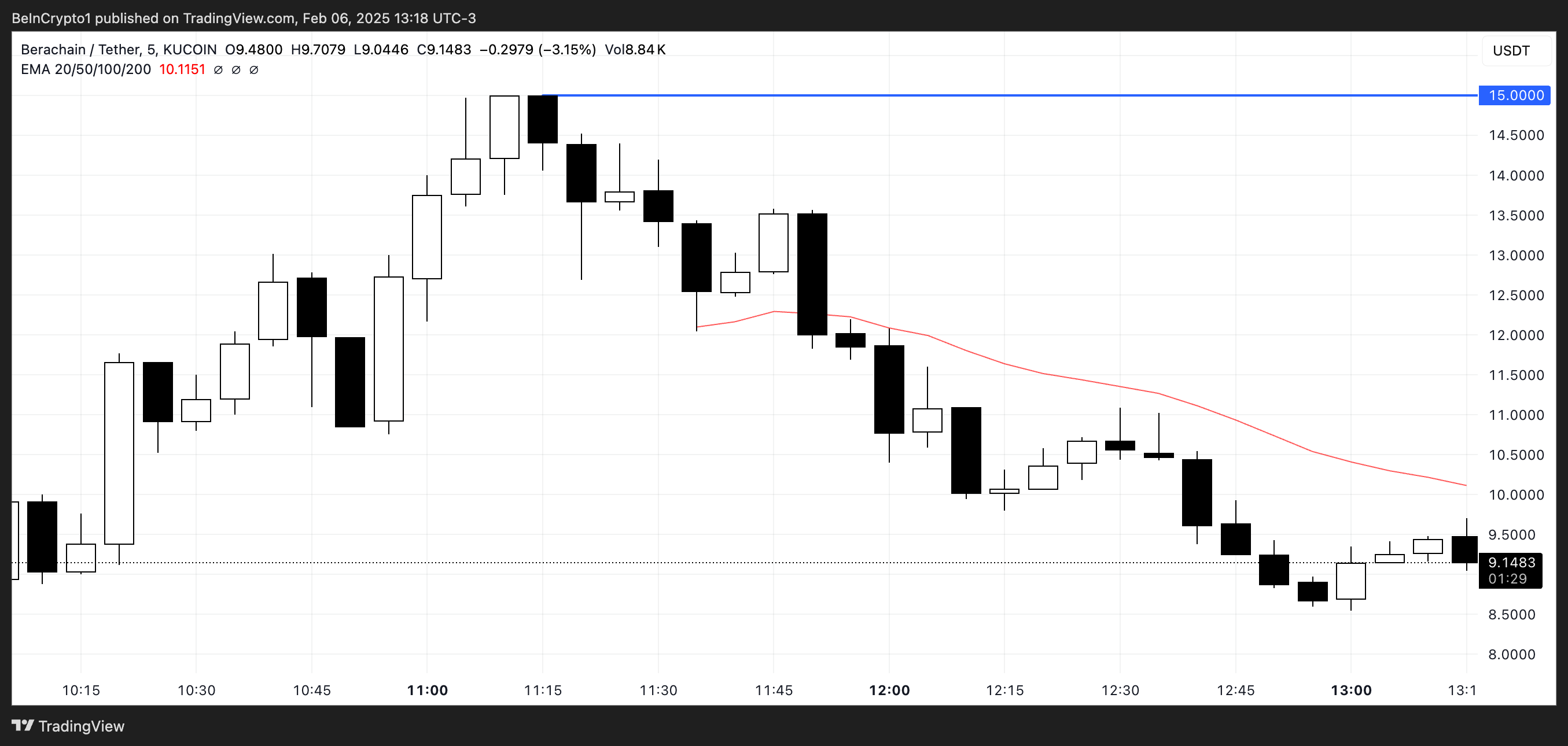-
Berachain’s (BERA) recent airdrop excitement faded quickly as its price peaked at $15 before declining, raising concerns over its market outlook.
-
The price volatility following the airdrop mirrors the trends of previous launches, exhibiting a broader instability in the crypto market.
-
According to insights from COINOTAG, “The market’s reaction post-airdrop indicates a typical ‘sell the news’ scenario for cryptocurrencies.”
Discover how Berachain’s (BERA) price surge post-airdrop quickly reversed, highlighting critical market dynamics and future predictions in the crypto realm.
Understanding BERA’s Airdrop and Initial Price Surge
The Berachain (BERA) token has emerged as a significant player in the blockchain space. Initially, it soared to $15 shortly after its mainnet launch, marking one of the most talked-about airdrops of 2025. This growth followed an active development phase throughout 2024, generating much anticipation among investors and crypto enthusiasts alike.
However, the excitement did not last long; shortly after the launch, the token’s price began to decline steeply. This pattern of initial highs followed by sharp corrections is not unusual within the crypto sector, as many investors often jump at the opportunity to maximize profits immediately after new token distributions.
The Role of Technical Indicators in BERA’s Price Decline
Technical analysis reveals significant bearish signals for BERA. The Relative Strength Index (RSI), a crucial momentum indicator, dropped to 42.6, indicating that the previous bullish momentum has subsided. A decrease from nearly 70 suggests that the market has transitioned from overbought territory into a more neutral, possibly bearish phase.
This movement has led to increased selling pressure, as indicated by the Chaikin Money Flow (CMF), which currently sits at -0.32. The negative CMF illustrates that liquidity is leaving the market, further reinforcing the downward trend unless a resurgence in buying interest offsets the selling.

Understanding these indicators is essential for potential investors looking to gauge BERA’s trajectory. With BERA’s RSI suggesting nearing oversold conditions, any significant recovery in momentum could take time unless market sentiment improves.
Market Trends: The Impact of Previous Airdrops
Historically, many airdropped tokens, such as HYPE and PENGU, have faced similar post-launch struggles, where initial excitement quickly dissipates. BERA’s trajectory appears to be consistent with this pattern, raising questions about the sustainability of its price following the initial surge.
If BERA continues to experience capital outflows, it could reflect more extensive issues within the market or the inherent volatility of newly launched tokens. Investors should be cautious, as widespread selling could lead to a sustained decline.

In light of these challenges, potential investors should monitor the broader market trends and sentiment closely as they consider entering or exiting BERA positions. The historical performance of airdrops suggests establishing a long-term view may be prudent.
Future Outlook for BERA: Is Recovery Possible?
Looking ahead, the immediate future for BERA seems turbulent despite the initial hype surrounding its launch. The combination of a falling RSI and negative CMF highlights serious challenges that need addressing. Investors are watching closely to see if BERA can stabilize its price or will succumb to further downward pressure.
The ability of BERA to recover will largely depend on market sentiment and external factors, including broader crypto market trends and the overall demand for Layer-1 solutions. A scenario where current bearish trends shift toward stabilization could change the narrative significantly.

For interested investors, keeping an eye on market sentiment and using proper risk management strategies will be crucial in navigating these unpredictable waters.
Conclusion
The recent price action of Berachain (BERA) serves as a reminder of the volatility present in cryptocurrency markets, particularly following airdrops. With negative technical indicators signaling potential for further declines, investors would be wise to exercise caution. Monitoring future developments around market sentiment may provide insights into possible recovery phases.
